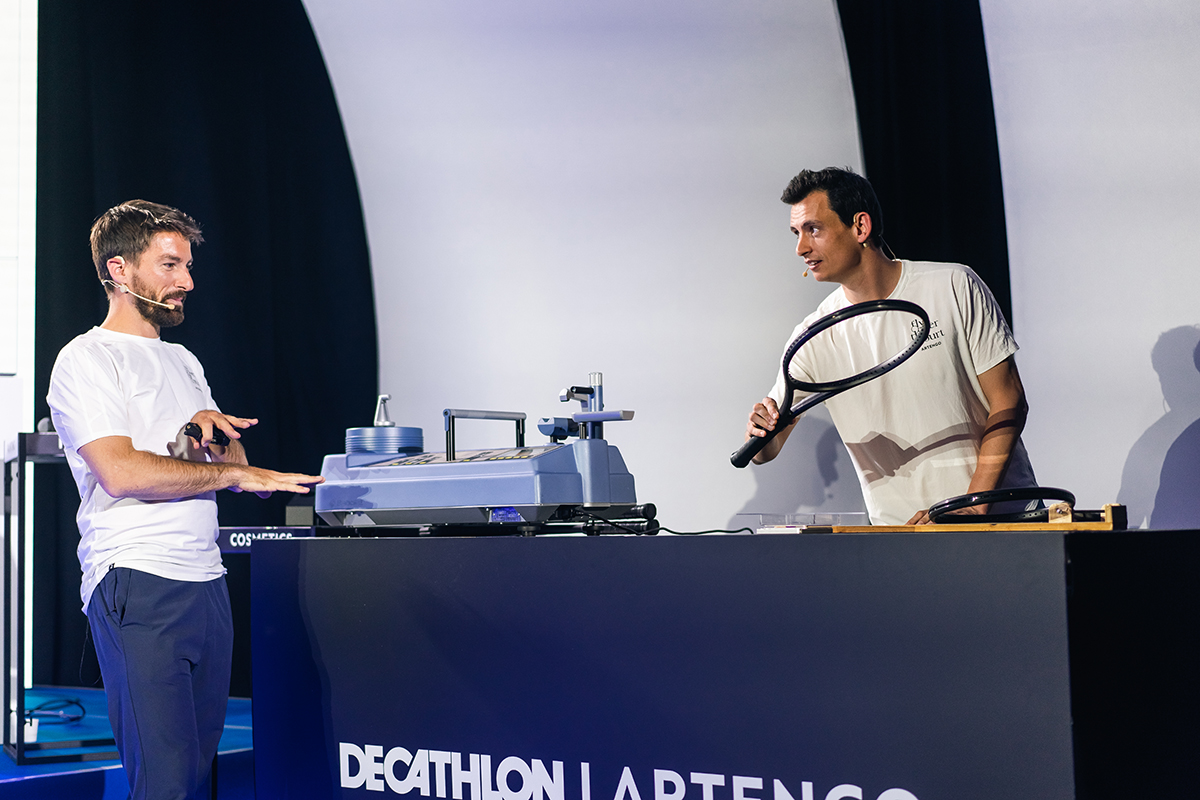The Musketeers
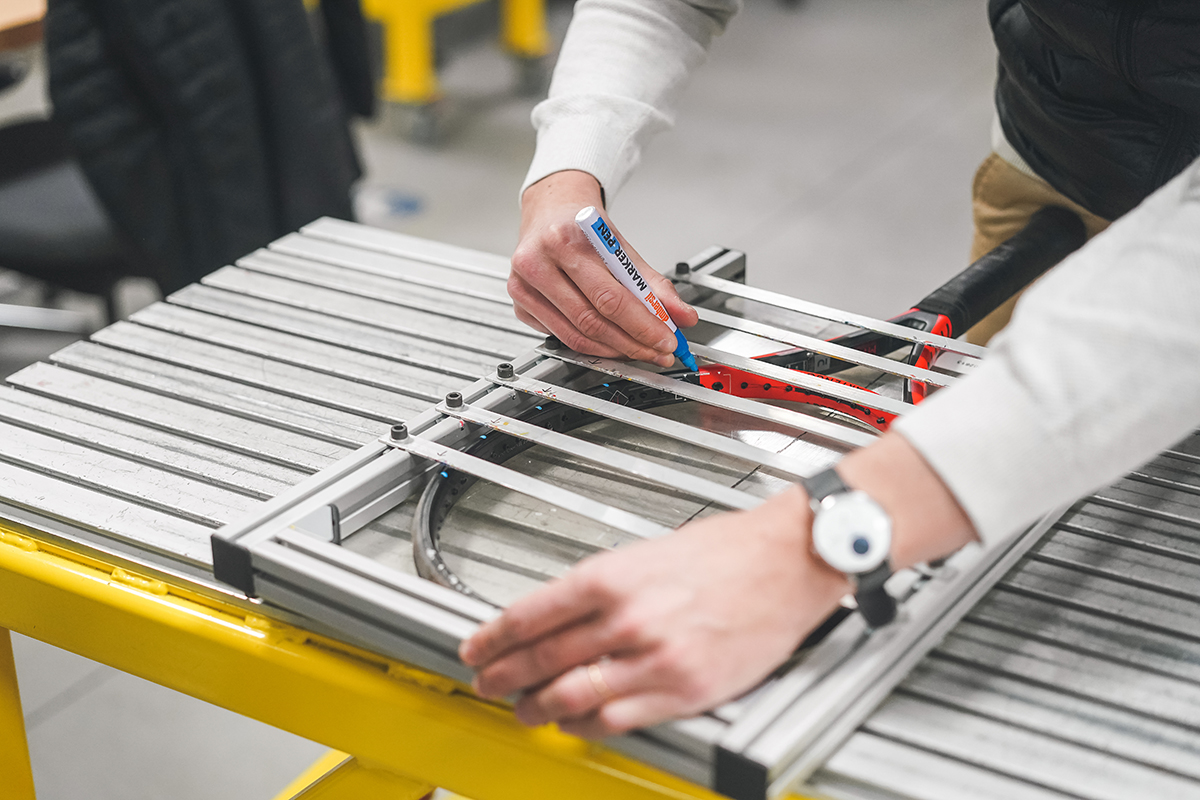
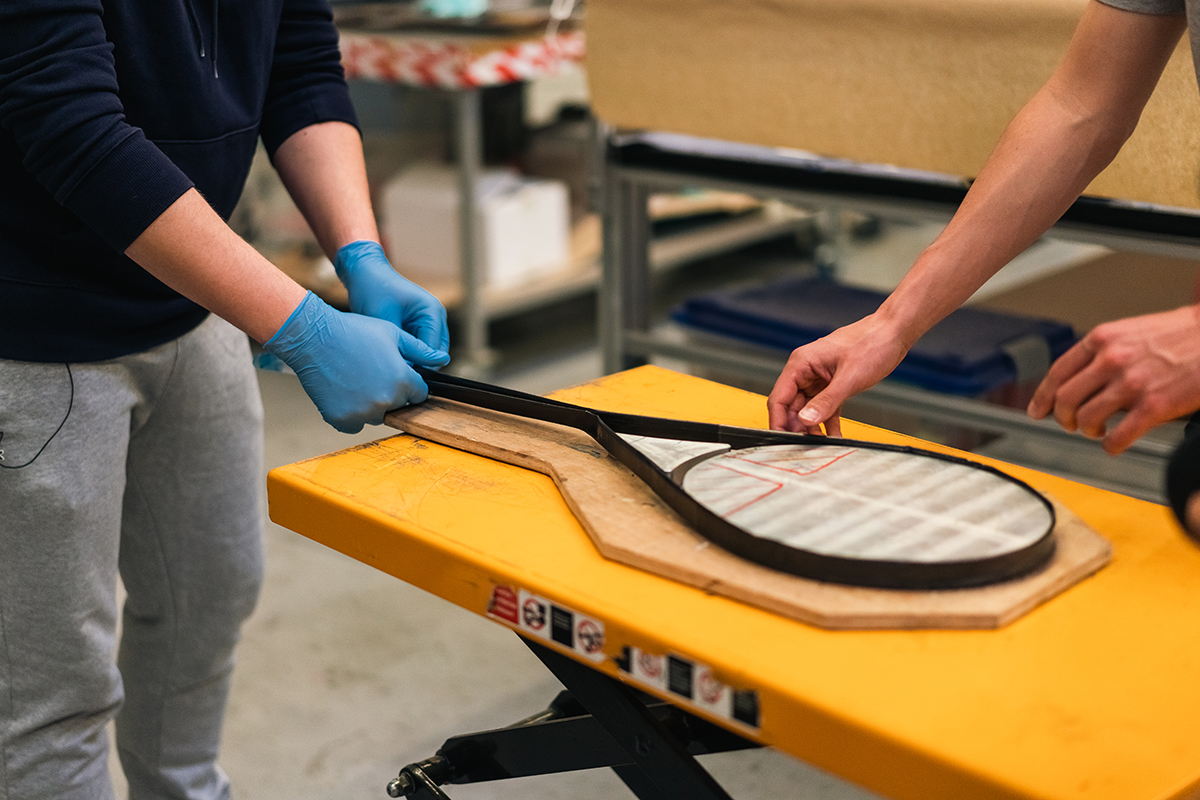
I must warn you. The only tension in this story is in the racquet. There are no unexpected twists or sudden turns. No, this is a story about patience and precision. It’s about a group of people who use terms such as swingweight, epoxy resin and carbon fibre. People who, at times, seem to speak in tongues when—eyes burning with a particular kind of fever—they explain to you how adding three grams of weight to this part of the racquet affects its ability to transfer energy to the ball, and how it, in turn, directly correlates to the power of a shot.
In the world of racquet manufacturing, the abundance of choice is enough to make one’s head spin. For the uninitiated, it can be extremely difficult to settle on a particular racquet. Faced with the dazzling selection, quite often we tend to turn towards the trusted brands—the industry heavyweights endorsed by such titans of the sport as Rafael Nadal with his Babolat Pure Aero or Novak Djokovic with the HEAD Graphene 360 Speed Pro. The cost may be steep, but how can you go wrong with a racquet that delivered so many Grand Slam titles? Here’s where the people mentioned in the opening paragraph will disagree. They will smile at each other, a little bit like croupiers in a casino, already knowing whether you won or lost.
It’s a common enough misconception. And in April of this year, Artengo, Decathlon’s tennis equipment arm, took a surprising and a fairly radical step to dispel it. In Villeneuve d’Ascq near Lille, the brand’s headquarters, a group of engineers, designers and racquet experts gathered to manufacture a piece of equipment in real time. It wasn’t so much a glimpse behind the curtain, but a forceful gesture of ripping it off. “At one point, I showed all the plans and scientific data to the camera. It’s like giving away the code to your safe,” explains Paul Forichon, Artengo’s racquet engineer. “Anyone can replicate our racquet. But we have nothing to hide because we’re proud of what we do. If a competitor wants to copy our racquet, we don’t care because no matter what, they will sell it at a higher price.”
Although racquet technology has enjoyed significant advances over the past three decades, Artengo believes that the models sold currently by the world’s most popular brands don’t justify the price. “A racquet should not cost €300. It’s not worth that much,” says Cyril Perrin, director of Artengo. “Artengo alone cannot revolutionise the industry. Changing mindsets will take time.”
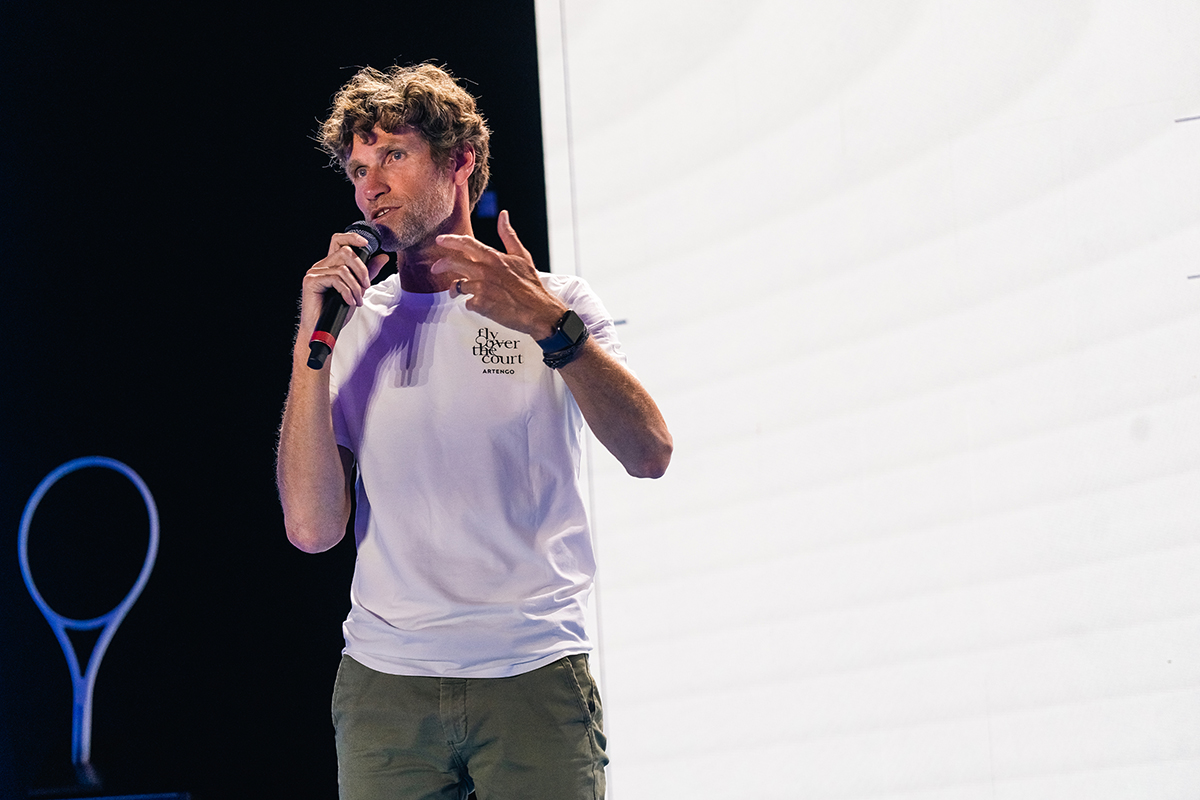
Traditionally, Artengo’s products ranked far below those of its competitors, both in price and in public perception of quality. While the first aspect is considered one of Artengo’s best assets, the second poses a significant problem to its marketability. Recently, Artengo struck a partnership with Gaël Monfils, a leading French tennis player who, as of writing this article, is delighting the French public with his improbable exploits at this year’s French Open. The move, aimed to expand the brand’s popularity and wider appeal, works in the same vein as the sponsorship deals that more established brands, such as HEAD or Wilson, sign with their players. And yet, the stigma of Artengo as a beginner’s racquet prevailed. “We received, and Gaël did too, many messages saying that it was just a disguised racquet, that it’s a Wilson in disguise. Honestly, it bothered us a bit,” says Perrin.
The messages might not have been the main motivation behind ACE, the Artengo Conception Experience event in Villeneuve d’Ascq, but it played a role. “This event is in line with our desire to show that we are true racquet designers,” Perrin says. The company took an extraordinary step. For two hours, Artengo professionals took the stage to fully explain their manufacturing process—from the conception of an idea to the finished product landing on the shelves of Decathlon stores.
With a live stream from multiple workshops, Artengo presented the many stages of creating a tennis racquet. The intricate process of placing epoxy resin combined with carbon fibre into a racquet-shaped mould, heating it up to 160°C for about half an hour, manually removing imperfections created by the heating process, applying colours and visual details, and finally stringing the racquet. Voilà! The product is ready to hit the shelves. What the demonstration didn’t show, although it explained it in detail, is the three-year long journey of design iterations that a product undergoes before it’s ready to be manufactured. “Currently, I’m working on products that will be available in stores in 2025,” explains Laure Pétré, responsible for artistic direction at Artengo. “I’m anticipating the strong trends that will be present in the tennis market at that time.”
During the evening, Artengo explained the ethos driving the brand and the need to stay on top of recent developments. One of the more visible changes in the game is the spin that players hit the ball with, and Artengo feels the need to be prepared to deliver. “The ability to generate spin, the spin segment, doesn’t necessarily come from the user saying they want more spin,” Perrin says. “But when we look at the evolution of playing styles, we see that people are putting more and more spin. Rafa [Nadal] has obviously contributed to this change.” Observing the trends happens at all levels—from the big, public stages to the smaller, contained ones. The main factor is the game development on both the men’s and women’s professional Tour. But Artengo also have their own secret lab—French Touch Academy in Cap d’Agde, with over 80 players serving as a petri dish of testing innovation.
Through the partnership with Monfils, Artengo sought to improve their product line, showcasing their credentials as makers of racquets fit for professionals (the company has also added Daria Kasatkina, current world No 9, to their portfolio of athletes). But what the collaboration has resulted in was also a deeper understanding of the relationship between a player and their racquet. “When Monfils joined, we were unsure. We thought about customisation, using his preferences,” Pétré says. “Over time, we decided to find a middle ground and focus more on co-creation.” Monfils’s input improved the viability of Artengo racquets at the highest levels of the game. But it also added nuance to the racquet manufacturing process overall. “By learning from Gaël, we also learn for [the benefit of] a beginner player. The two are completely correlated,” adds Perrin.
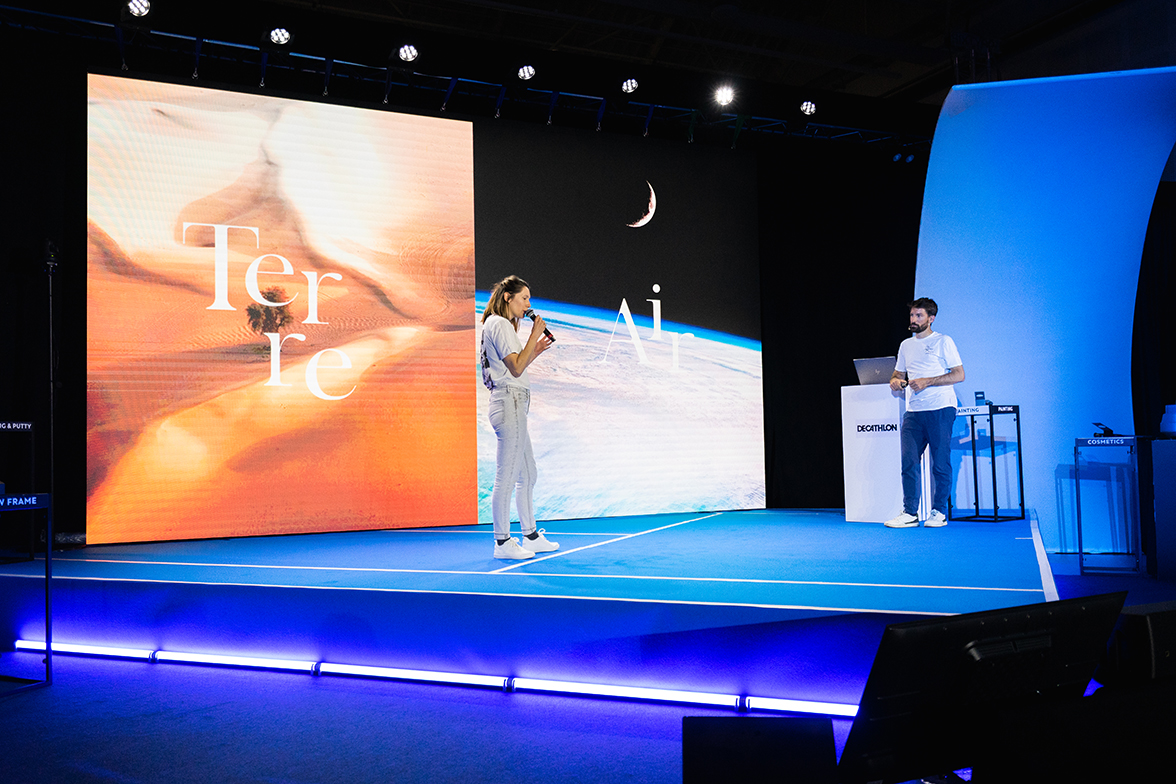
However, Paul Forichon notes that what’s best for the players of Monfils’s calibre, may not be best for a weekend warrior. This is due to a number of reasons from the obvious differences in level (you and I are very unlikely to be facing serves approaching speeds that Monfils does) to the racquet’s technical aspects. “Even though the sensations between professional players and recreational players are completely different, the process of translating sensations into technical characteristics within the different layers of the racquet is the same,” adds Perrin. In the end, it’s all about handing a player a racquet they will feel comfortable playing with. “We want to provide people with the right racquet, not the racquet,” Forichon points out.
Artengo is a relative newcomer to the racquet manufacturing field, but they are already looking towards the future. In the next few years, the company hopes to have a line of aluminium based, eco-friendly racquets. “Zero waste is not possible,” acknowledges Perrin. “The goal is to minimise waste as much as possible without drastically changing its [the materials] use. However, there may come a point where we are forced to modify the usage by incorporating alternative types of fibres. The game has evolved towards the use of increasingly rigid racquets and carbon materials. Perhaps we need to revert to more flexible options to find alternatives to carbon and reduce pollution.”
The game’s well-acknowledged impact on the environment is something that plays on Artengo’s mind a lot, and the manufacturer is already experimenting with possible alternatives. The aluminium based racquets already have their prototypes within the Artengo lab. “We want to create a product that performs just as well but has a reduced impact,” explains Forichon, who is also responsible for the brand’s sustainability.
Artengo’s message is clear. Just because a racquet is cheaper than those of the market leaders, it doesn’t mean that it’s in any way worse. A well-known logo attached to the frame, also doesn’t translate to its potential for high-level play, as Monfils’s achievements showcase. Cyril Perrin, Paul Forichon, Laure Pétré and the rest of the Artengo team pour hundreds of hours into development, iteration and testing of the initial product design, hoping that the end result can not only match the current developments in the game, but exceed it. The next time you head to the courts with your trusty racquet—be it Artengo or any other—spare a thought for the trio, probably hunched over this racquet mould or that sample of epoxy resin. They may be far, but they are thinking about you.
Story published in Courts no. 4, Summer 2023.
